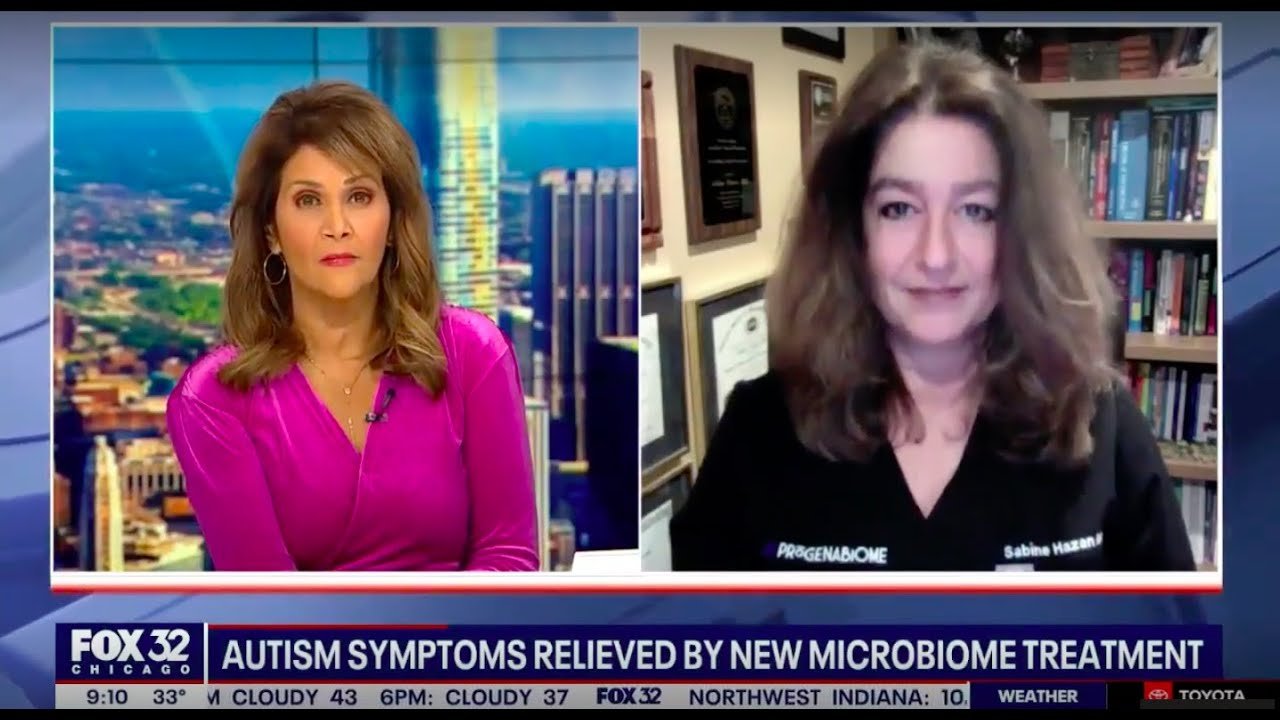Groundbreaking Study on Fecal Microbiota Transplant for Autism
Bacteria and viruses in the gut significantly improved symptoms of autism in a 19-year-old patient. This involved what is known as a fecal microbiota transplant. This all sounds confusing but it’s being called groundbreaking. Joining us to explain is gastroenterologist Dr. Sabine Hassan.
Good morning to you and thank you for joining me. Let’s get right to this because wow, this is fascinating. Explain what this transplant is and what’s involved.
What is a Fecal Microbiota Transplant?
So it’s essentially taking fecal material from the sibling and implanting it into the child via colonoscopy. It’s as simple as that.
Case Study: 19-Year-Old Patient
Explain to us how this worked in this case involving this 19-year-old patient, which is what you had done this paper on. How did the patient behave pre-treatment and post-transplant?
Pre-treatment, the child was banging his head, breaking his teeth, and of course, it took us three years to get through the FDA. COVID was in the middle of all this to get approval for this one case. Once we got approval, we essentially did the fecal transplant and planted the new microbiome into the child.
What we noticed was a change in the microbiome. The child initially had a lot of proteobacteria phylum, and then that essentially disappeared, and he matched his sister’s microbiome. Clinically, he started saying two words, “Mama” and “Baba,” which was very exciting. His toe fungus disappeared, he started sleeping better, and he was not aggressive anymore. He was definitely not banging his head or breaking his teeth. This was an amazing case, and hopefully, we can do more, and the FDA will allow us to do a lot more children in the future.
Questions About the Procedure
So many questions for you. So you got the transplant from a sibling. Is that critical? Does it have to be a family member? And what exactly is going on to change how this person is dealing with autism? Or did this cause the autism? So many questions.
Yeah, and those are so many questions for us too, right? I mean, what caused this? What caused the imbalance? Why was this proteobacteria phylum so high to begin with? My studies are really to look at families. We look at the microbiome in families, we look at siblings that are neurotypical versus children that have autism, and we compare to see if there’s a match that we can do.
Of course, there are kids that don’t have siblings, so we have to look for other donors, and I think those were the studies of Dr. Adams showing that previously. So yeah, this is exciting because this was not expected in a 19-year-old. It certainly was not expected using a sibling’s microbiome, but here we are, and it opens a whole new world.
Who Can Benefit From This Technique?
Let’s talk about that because there are parents at home who are watching thinking, “I wonder if this might be right for my child?” So who is this technique geared towards, and would you call it not a cure but some are saying it’s a game changer?
For parents, definitely, it’s a game changer because they are more relaxed. This family couldn’t go on trips. One parent was always staying up at night watching the child, so it was not a life. After the transplant, they actually went on a trip together, and their life was back. It was much more peaceful at home.
This is not something you do at home. This is something that we obviously do genetic sequencing tests to look at the microbiome of the children. It is still, you’re playing with microbes, that’s why the FDA is involved. And I want to emphasize that this is not an approved test yet. This is really at the beginning and with the FDA really holding our hand the whole time while we perform these procedures.
Does Every Person with Autism Have Microbiome Issues?
Let me get this other question real quick. So this doesn’t necessarily mean that every person or child with autism has issues with the microbiome, correct? This was just this particular case, but this may be something that might be a little more common in the autism community. Explain.
Correct. What we’re noticing, especially as we’ve analyzed the microbiome of multiple families, is some kids we believe have a neurological problem as primary, some kids have a microbiome problem as primary, and some kids it could be the connection between the gut and the brain. Those are the studies we’re doing. That’s why I’m working hand in hand with Dr. Sheldon Jordan, the neurologist.
This is the future. We need to start understanding autism better. Is it primary brain, is it primary gut, or is it the connection in between? But I think this case opens up that there are some kids where the microbiome is the problem, and we need to correct that. Ignoring that is a problem because these kids are suffering for no reason if we can correct it.
Fascinating study. Gastroenterologist Dr. Sabine Hassan with Progena Biolab, thanks so much for joining us this morning. Very interesting. Can’t wait to hear what else is going to be coming out of your lab. Thanks for your time.
Thank you. Thank you very much.
Science never ceases to amaze. Oh my goodness, that’s amazing. Okay, let’s go back and check with Tim, who was showing us all the different colors.
Read More: Trump’s Retort to Biden Administration Following the Death of a Key Hamas Leader

